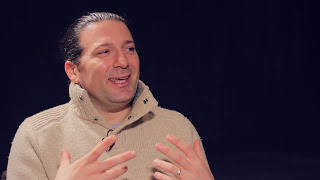In Chapter 7 of 16 in her 2012 Capture Your Flag interview, art director Lulu Chen answers "How Did You Get Hired as an Art Director Without Being a Traditional or Obvious Candidate?" During an interview, Chen is asked "What do you really want to do?" and after answering not with stylist but rather with art director and creative director, she is given an opportunity to interview with a creative director. Chen gets the art director job. This experience teaches Chen to ask for the job she wants.
Lulu Chen is a photo art director working in retail e-commerce in New York City. Previously, Chen worked as a freelance stylist for leading fashion catalogs and magazines. She earned a BFA in design and art history from the University of Michigan.
Transcript:
Erik Michielsen: How did you get hired as an art director without being a traditional or obvious candidate?
Lulu Chen: Well, I did some art directing when I worked at Self Magazine, and, you know, you had to work on the styling and art directing, so that was really great experience for me, but recently, transitioning into more of an art directing role than a stylist role. This is a really funny story. I actually went in to an interview thinking of applying for a fulltime styling position, but it turned out that the company was so big, and that specific job was actually with an acquaintance friend of mine that we had worked together years ago, at Condé Nast for. But, you know, sitting in his office, he basically—we were both like, “This isn’t for you.” Like, “It’s a writing job. You can do it. You can do these pages. If you really want it, you know, I’ll think about it. But what do you really want to do?”
And in the last couple of years, I’ve been thinking about like, “Oh, you know, someday I’d really love to be a creative director. I’d love to do something a bit more bigger picture.” You know, just kind of growth and transitioning, and—I don’t know—setting up new challenges for myself, so, he kept pressing me, like, “What do you really wanna do?” Like, “What do you wanna do? What do you wanna do?” And I was like, “Oh, my God. I just want, you know, I wanna be an art director and a creative director one day.” And it just came out. And—but I had never said it out loud. I—you know, I kind of questioned some friends who were art directors and, you know, tried to kind of get their advice on, “Oh, what do you think?” or “How do I do it?” But I never really just put it out there, you know?
And sitting here in an interview, and I’m like, “I can’t believe I just said that.” But it is, it’s true. It’s really what I was hoping for. And, you know, his response was, “Fine. Okay.” And you’re like, “That’s it?” “Really, it’s that simple?” I mean, you know, I never thought—“Oh, you just keep asking. You just keep asking.” Or, you ask—You ask, you know, and sometimes, you know, someone will be like, “Fine. Try. Go for it”, you know, maybe— So I was really lucky, he—and I really appreciate that he gave me the opportunity, and he put me in touch with his creative director. And love this man, so, so—I don’ know—just inspirational. I think I had a 12-minute interview with the creative director. And he spoke, like 3 languages in that time. Picked up a phone call in French, said hi to me in Chinese, told me about all of operations, looked at my portfolio, showed me, like, some video that he had done, like, in 12 minutes. I mean, it was like the fastest talker I’ve ever met in my entire life, that type of thing. And you’re just like, “Whoa.” You know, and he said, “Okay.” He’s like, “We’re gonna give you this chance.”
You know, maybe he didn’t say that literally, but he gave me the chance and I remember this so clearly, he said, “Do good and good things will happen, and, yeah.” And he’s like, “Just don’t F it up.” And he kind of put the fear of God in me, but at that moment, I was like, “Well, there’s no going back now, so, you know, that’s not an option. So you’re just gonna go for it”, you know. You know, so I did.



















